I need to get the data in two parent > child table sets merged/combined into a third parent > child table.
The tables look like this:

The only difference in the three sets of tables is that TableC has a TableType column to help discern the difference between a TableA record and a TableB record.
My first thought was to use a cursor.. Here's code to create the table structure, insert some records, and then merge the data together. It works very well, sooooo....
--Create the tables
CREATE TABLE TableA
(
ID int not null identity primary key,
Name VARCHAR(30)
);
CREATE TABLE TableAChild
(
ID int not null identity primary key,
Parent int not null,
Name VARCHAR(30),
CONSTRAINT FK_A FOREIGN KEY (Parent) REFERENCES TableA(ID)
);
CREATE TABLE TableB
(
ID int not null identity primary key,
Name VARCHAR(30)
);
CREATE TABLE TableBChild
(
ID int not null identity primary key,
Parent int not null,
Name VARCHAR(30),
CONSTRAINT FK_B FOREIGN KEY (Parent) REFERENCES TableB(ID)
);
CREATE TABLE TableC
(
ID int not null identity primary key,
TableType VARCHAR(1),
Name VARCHAR(30)
);
CREATE TABLE TableCChild
(
ID int not null identity primary key,
Parent int not null,
Name VARCHAR(30),
CONSTRAINT FK_C FOREIGN KEY (Parent) REFERENCES TableC(ID)
);
-- Insert some test records..
INSERT INTO TableA (Name) Values ('A1')
INSERT INTO TableAChild (Name, Parent) VALUES ('A1Child', SCOPE_IDENTITY())
INSERT INTO TableB (Name) Values ('B1')
INSERT INTO TableBChild (Name, Parent) VALUES ('B1Child', SCOPE_IDENTITY())
-- Needed throughout..
DECLARE @ID INT
-- Merge TableA and TableAChild into TableC and TableCChild
DECLARE TableACursor CURSOR
-- Get the primary key from TableA
FOR SELECT ID FROM TableA
OPEN TableACursor
FETCH NEXT FROM TableACursor INTO @ID
WHILE @@FETCH_STATUS = 0
BEGIN
-- INSERT INTO SELECT the parent record into TableC, being sure to specify a TableType
INSERT INTO TableC (Name, TableType) SELECT Name, 'A' FROM TableA WHERE ID = @ID
-- INSERT INTO SELECT the child record into TableCChild using the parent ID of the last row inserted (SCOPE_IDENTITY())
-- and the current record from the cursor (@ID).
INSERT INTO TableCChild(Name, Parent) SELECT Name, SCOPE_IDENTITY() FROM TableAChild WHERE Parent = @ID
FETCH NEXT FROM TableACursor INTO @ID
END;
CLOSE TableACursor
DEALLOCATE TableACursor
-- Repeat for TableB
DECLARE TableBCursor CURSOR
FOR SELECT ID FROM TableB
OPEN TableBCursor
FETCH NEXT FROM TableBCursor INTO @ID
WHILE @@FETCH_STATUS = 0
BEGIN
INSERT INTO TableC (Name, TableType) SELECT Name, 'B' FROM TableB WHERE ID = @ID
INSERT INTO TableCChild(Name, Parent) SELECT Name, SCOPE_IDENTITY() FROM TableBChild WHERE Parent = @ID
FETCH NEXT FROM TableBCursor INTO @ID
END;
CLOSE TableBCursor
DEALLOCATE TableBCursor
Now, my question(s):
- I've always been told that cursors are bad. But I couldn't find another way of doing it. I'm wondering if there's some way to do that with a CTE?
- If the cursor is appropriate in this situation, how did I do? Is there a better way of doing what I did? It doesn't look very DRY to me, but I'm no SQL expert.
Lastly, if you want to re-run the query above, here's a small script to delete the tables that were created.
DROP TABLE TableAChild
DROP TABLE TableBChild
DROP TABLE TableCChild
DROP TABLE TableA
DROP TABLE TableB
DROP TABLE TableC
The correct result should look like:
